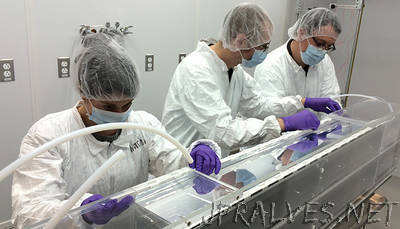
“A new study from the international Daya Bay neutrino experiment in China may have found an answer for why there appear to be fewer neutrinos from nuclear reactors than predicted in theoretical models. The next step will be for Yale’s Wright Lab — which has been involved in the Daya Bay research for a number of years — to confirm whether that answer is correct. Neutrinos are thought to be fundamental particles in the universe. They do not carry an electrical charge and move through the universe almost entirely unaffected by natural forces. For years, scientists have devised elaborate experiments to detect the subatomic particles and better understand their behavior. Yale scientists were involved in the experiments that led to the discovery of neutrino oscillation. Yet since 2011, physicists have been faced with an anomaly: Experiments at nuclear reactors showed fewer antineutrinos (the antiparticles of neutrinos) being produced than models had predicted. One theory to explain the discrepancy was that neutrinos were morphing into an undetectable form known as “sterile” neutrinos. The new Daya Bay study proposes a simpler explanation: a miscalculation in the predicted rate of antineutrino production for one particular component of reactor fuel. During nuclear fission, antineutrinos carry away about 5% of the energy released as the uranium and plutonium atoms — which fuel the reactor — split. The composition of the fuel changes as the reactor operates, with the decays of different forms of uranium and plutonium (called isotopes) producing different numbers of antineutrinos with different energy ranges over time, even as the reactor steadily produces electrical power. The Daya Bay scientists found that antineutrinos produced by nuclear reactions from the fission of uranium-235 were inconsistent with predictions. Uranium-235 is an isotope that is common in nuclear fuel.”
